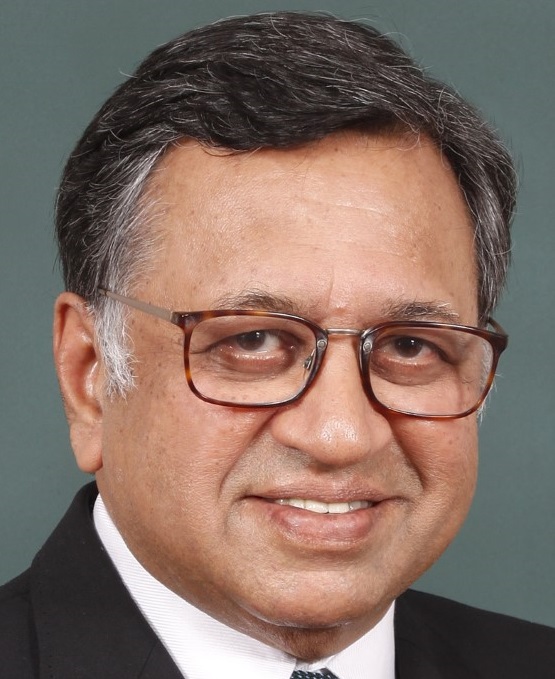The wall between judiciary, executive must not fall
IMAGES are as powerful as oral messages, often more so. One can play with words, retract or deny. A picture, however, is a plain reflection which captures the moment. Just like Omar Khayyam’s phrase “the moving finger writes and having writ moves on”, so too can one say that “the picture has been clicked and once clicked the subjects cannot move out”.
Many comments have been made on the photograph of Prime Minister Narendra Modi participating in Ganpati Puja at the residence of Chief Justice of India DY Chandrachud. It is likely that this arose from a polite invitation which was responded to, and the heads of the executive and the judiciary conducted themselves with propriety when they met. It is unlikely that any conversation would have transpired which should cause us alarm.
Nevertheless, the dust does not settle easily, and perfect equanimity does not attend this image. There is a constitutional distance that must be maintained between the judiciary and the executive; the doctrine of separation of powers creates a wall between the two. Checks and balances are the stuff of democracy, but they are to be had only if the parties stand some distance apart and not chummily close to each other. In a democracy, the judiciary is the watchdog, the sentinel on the qui vive. It is the guardian and enforcer of the Constitution; it tempers the mighty State and makes it responsive to the plea of the hapless citizen. All this implies an elevation and a distancing; only if these two are there can we have the picture of the one who does not spare the rod when the other gets out of hand.
Judges and ministers are not supposed to be friends. There have been earlier instances when prime ministers have spoken of cordial relations between the executive and judicial branches and have been promptly corrected by Chief Justices, who pointedly referred to the need for a certain tension between the government and the court and the constitutional requirement of the latter acting as a check on the former. Only thus is the constitutional balance maintained.
The problem is one of precedent. Granted that there was no lack of a good motive on the part of the inviter and the invitee, yet the test to be applied is how this would look on a larger, repetitive scale. Would we feel comfortable if ministers and judges freely mix with one another at religious functions? And then why stop at religious functions, why not social functions too? Let’s not get into private dinners. Once the line breaks, the natural order of things is that it will break again and again.
More than anybody else, judges are aware of the power of precedent. One breaks the ranks and accepts to become a governor virtually under the Home Ministry, and lo and behold, after several years, another does, and this time there is less protest, Good conventions require much effort in their making, but the reverse is true of breaches, as in a dyke, one breach will occasion several more.
The problem is also one of perception. The judiciary is no stranger to the axiom that justice must not only be done but must be seen to be done. Similarly, the separation of powers involves barriers and distancing and this must be seen to be erected and to exist not just in the performance of official functions but every moment. Conformity to convention will not draw comment, but dissonance will get magnified. That is why those holding high offices must be particularly circumspect in the public imagery that they send forth. Ultimately, in these things, it is not for the high and mighty to be satisfied that nothing is amiss. We must come lower to meet the eyes of the common man. The law affords a particular place of importance to this person who has no real shape (save in RK Laxman’s drawings) but comes alive in the books of law. He represents the public at large, those whose good opinion one must secure for governance to be said to be good. If one pictures this little man, can one see him sanguine or would we see him perplexed and a little troubled on seeing this photograph? That’s the simple test, and at the end of the day it is this test that matters.
There are critical comments about the Chief Justice having invited the Prime Minister, but surely the PM also has the duty to uphold conventions and respect propriety. That said, it is the judiciary which is more damaged if the contact is looked at askance. This is because our expectations of good conduct are far higher for judges than for politicians. Part of the reason we surrender to them the power of deciding between right and wrong is because they are upholders of right, convention and propriety.
Politicians can and do get away with things much more easily; what would occasion the raising of eyebrows with respect to a judge will not cause a flicker with respect to a politician. Society needs these fine upholders of high values — and these values — to be on constant display. There is no need for excessive criticism or alarm and one should not read too much into this incident; yet, it is best if everyone learns a cautionary lesson from it. Our codes of conduct can be written, but it is in observance that the tone is set and the lesson ingrained. Of legal luminaries Motilal Setalvad and CK Daphtary it was said that when they were around, there was no need for a code of conduct; one had to just ask what they would have done in the circumstances. That is what we require today of our men and women holding high judicial offices.









